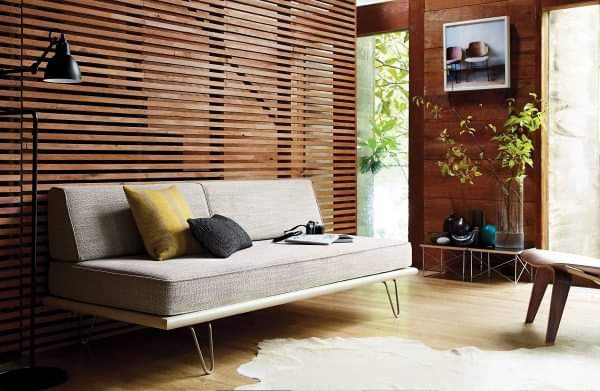Types of wall construction and finishing and their attractiveness
Types of wall construction and finishing and their attractiveness
Cloths, plaster walls, and tiles are commonly known as wall finishes, but it may not be well known that there are different types of construction. Not only the finishing method and design, but also the impression of the interior will differ greatly depending on the construction, so it is important to select the one that suits each image. So this time, let’s take a closer look at the types of construction and finishing. Such a structure makes a difference not only in design but also in workability and indoor environment, so let’s pay attention to such points.
Makabe’s charm
Makabe is also a wall structure that has been incorporated into Japanese architecture for a long time, and its characteristic is that the framework of the building such as columns and beams appears on the surface of the wall. The charm of Makabe is that it is a wall consisting of wooden columns / beams and plastered walls, so it comfortably regulates the humidity in the room, and the wooden frame becomes a part of the interior, so it is Japanese style. Not only the style, but also the warmth and fragrance of wood, such as modern Japanese and natural interior design, create a space. Furthermore, even when the building is getting older, it will be attractive to be able to easily check the defective part of the structural part as it is.
The charm of the big wall
A large wall is a true wall where you can see the framework, and such columns and beams are completely covered with panels, etc., and the entire wall becomes a clean and flat surface. Large walls are now the mainstream for housing, and one of the reasons is that large walls are relatively easier to construct, have a shorter construction period, and are less costly than Makabe. Can be mentioned. In addition, its clean design is perfect for modern interiors and minimalist homes, creating a space with a rich design.
Cross finish
The finishing material on the wall greatly affects the impression of the interior. When choosing, consider not only the color and pattern of the finishing material, but also the functionality and texture. The most common material for wall finishing is probably cloth. The big attraction of cloth is the speed of construction and the low cost. There is no need to recoat like a plaster wall, just sticking the cloth on the wall, the construction speed is fast and the construction is relatively easy, so the cost is cheaper in terms of labor costs and material costs. It is a finishing material. In addition, the cloth has countless colors and patterns, and one of the attractions is the wide variety of designs.
Nurikabe
Nurikabe is a wall finish that has been used in Japanese architecture for a long time, but in recent years its appeal has been re-recognized, and more and more people are incorporating it into the walls of their homes. After all, its appeal is that it is a natural material that does not contain the chemicals that cause sick building syndrome. Furthermore, it has a variety of functionality such as humidity control function, excellent fire resistance, and function to decompose formaldehyde. In addition, the unique texture of the plaster wall and the hands of craftsmen make it possible to create a different look on the plaster wall with various surface finishing methods such as a gold trowel press finish.
Tile finish
Floor tiles are available, but walls can also be tiled. The attractiveness of the tile finish is that it is durable with almost no damage, is resistant to water and dirt, and can be easily cleaned by wiping with water if it is a little dirty. In addition, there are many design variations, which can be matched to various interior designs. In this way, each method of building and finishing the wall has its own characteristics and merits, and it is important to make a selection while fully understanding these points in order to create a better indoor environment and a stylish interior space. In addition, it is a good idea to consult with the architect, considering how to finish the walls according to how you use and spend your time in each room, such as the kitchen, living room, and bathroom, so that you can take advantage of each.
Types of wall construction and finishing and their attractiveness
















